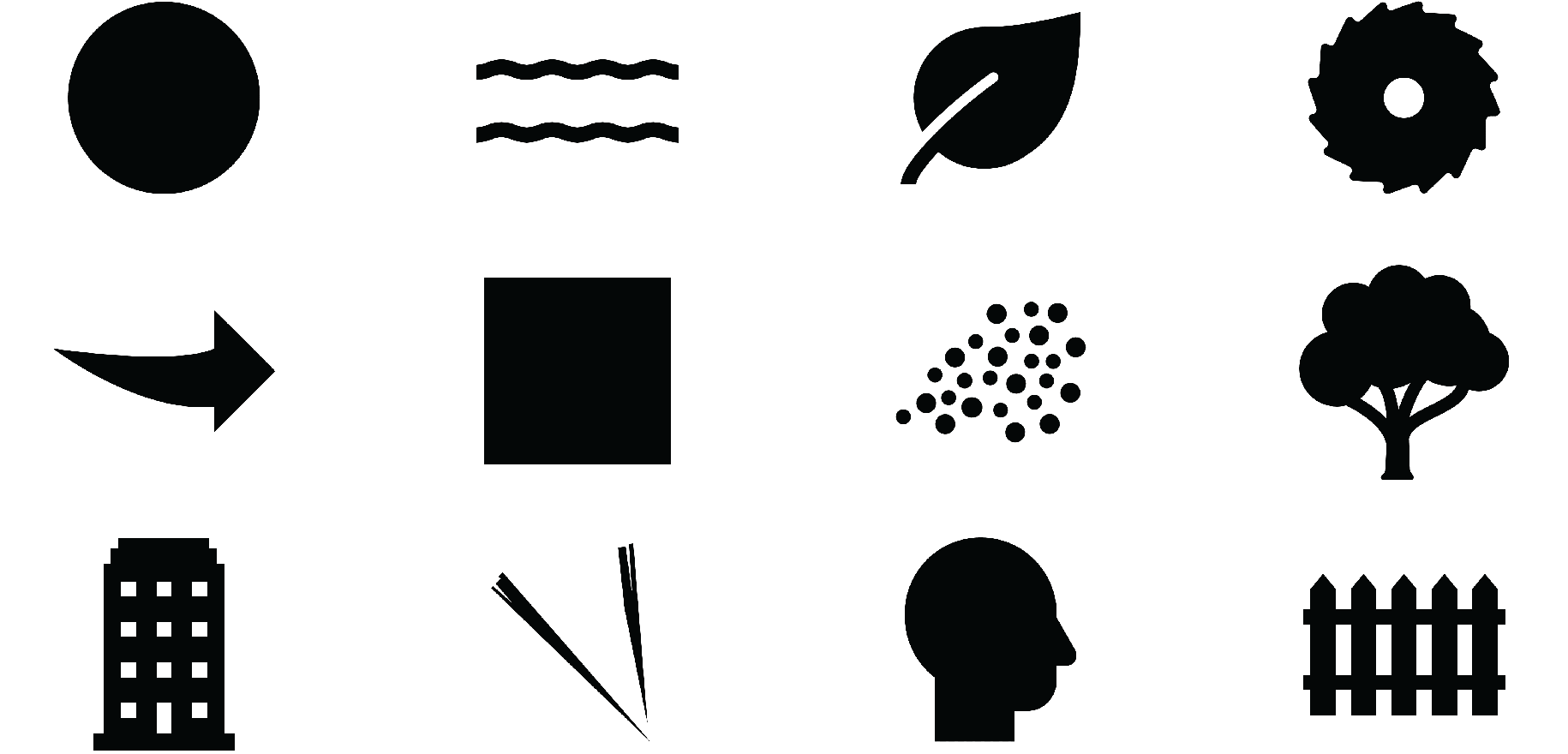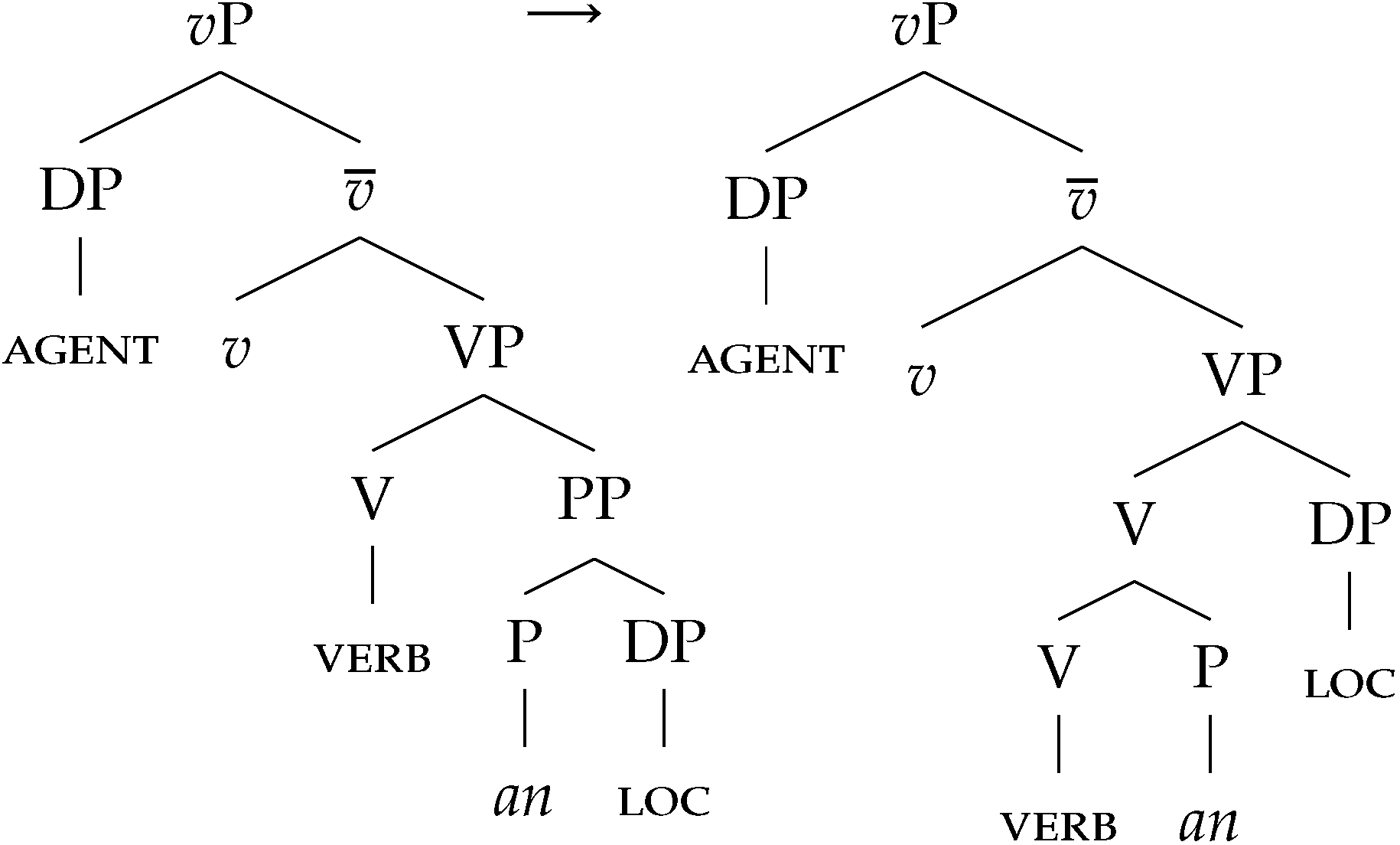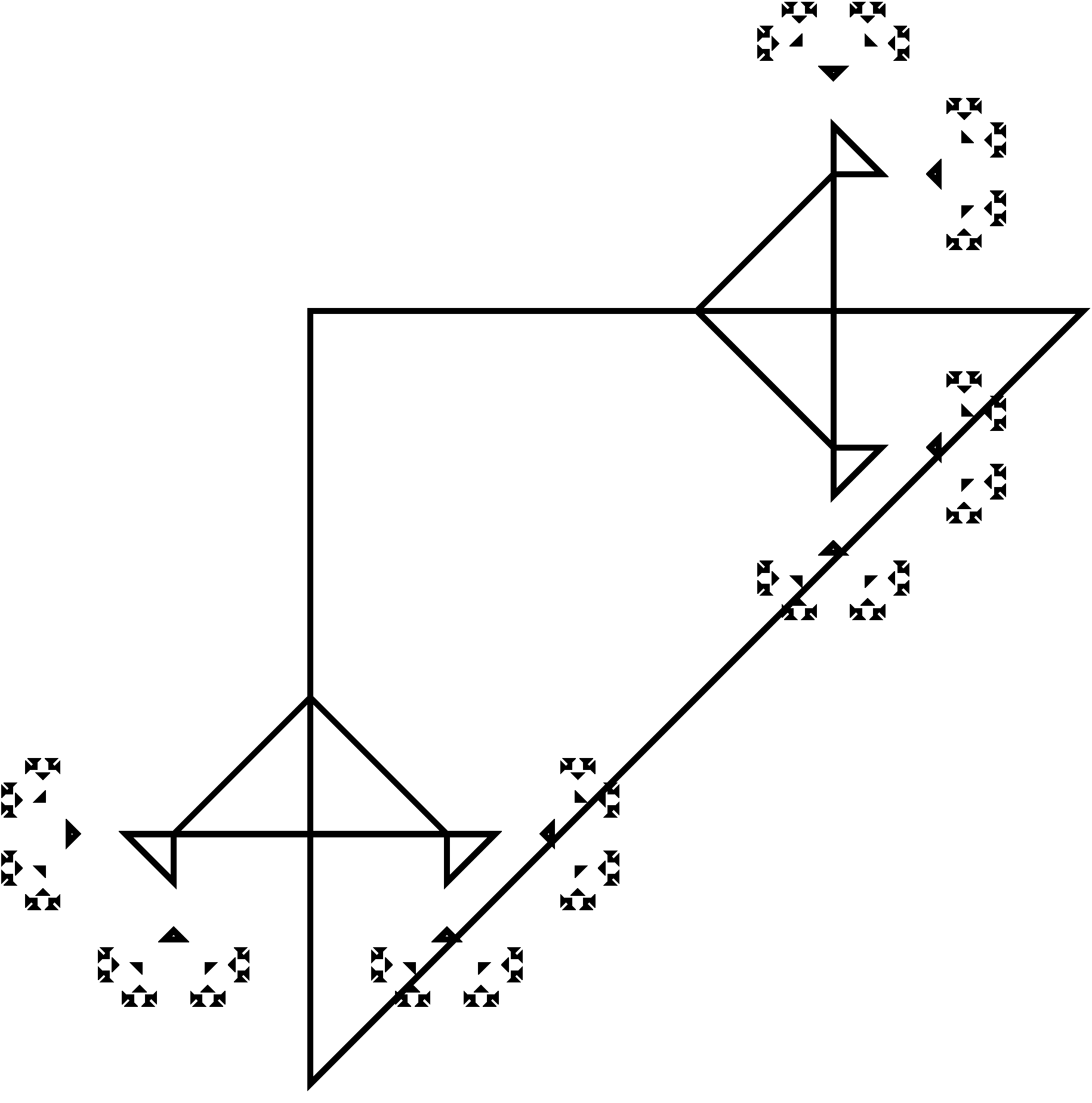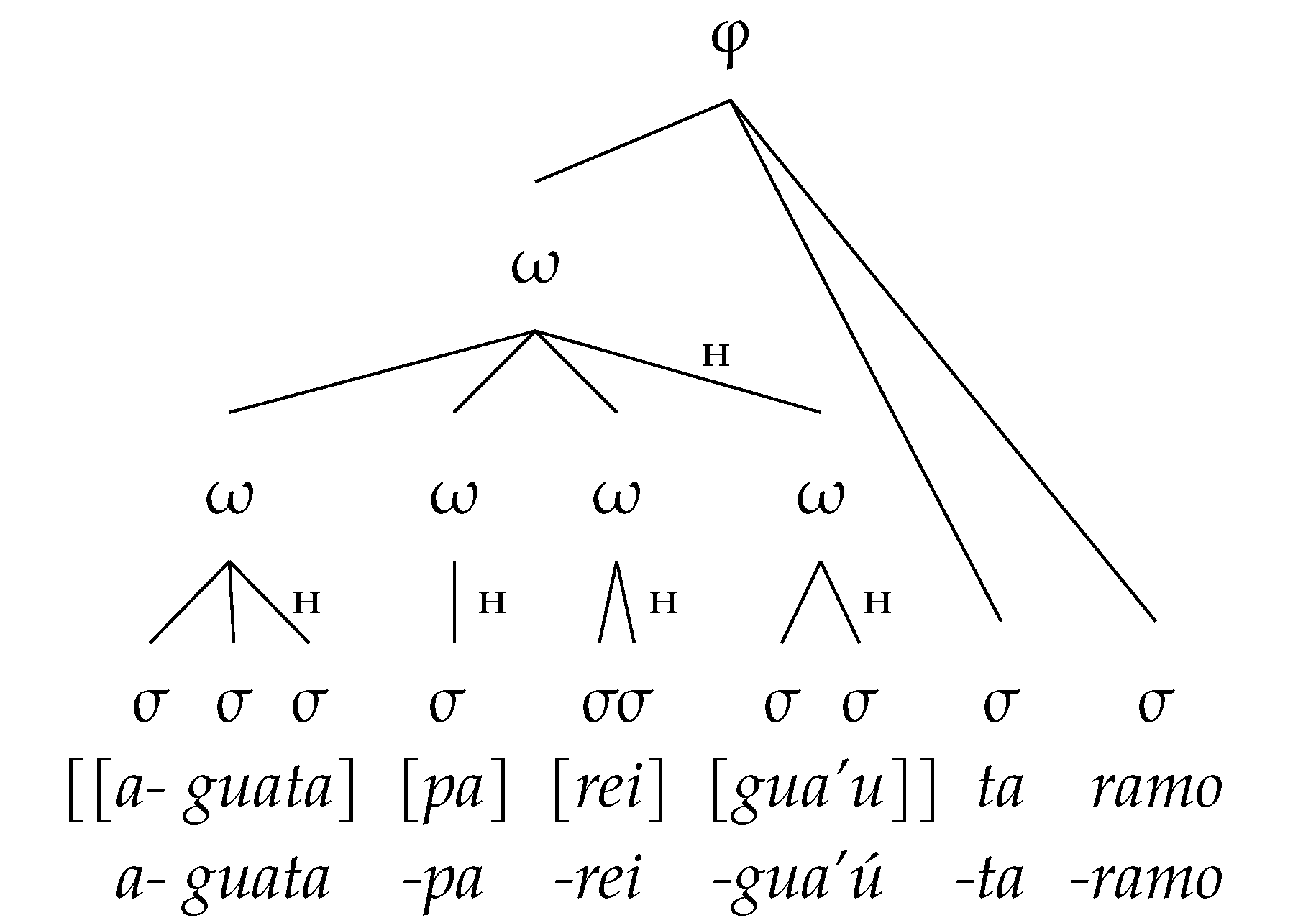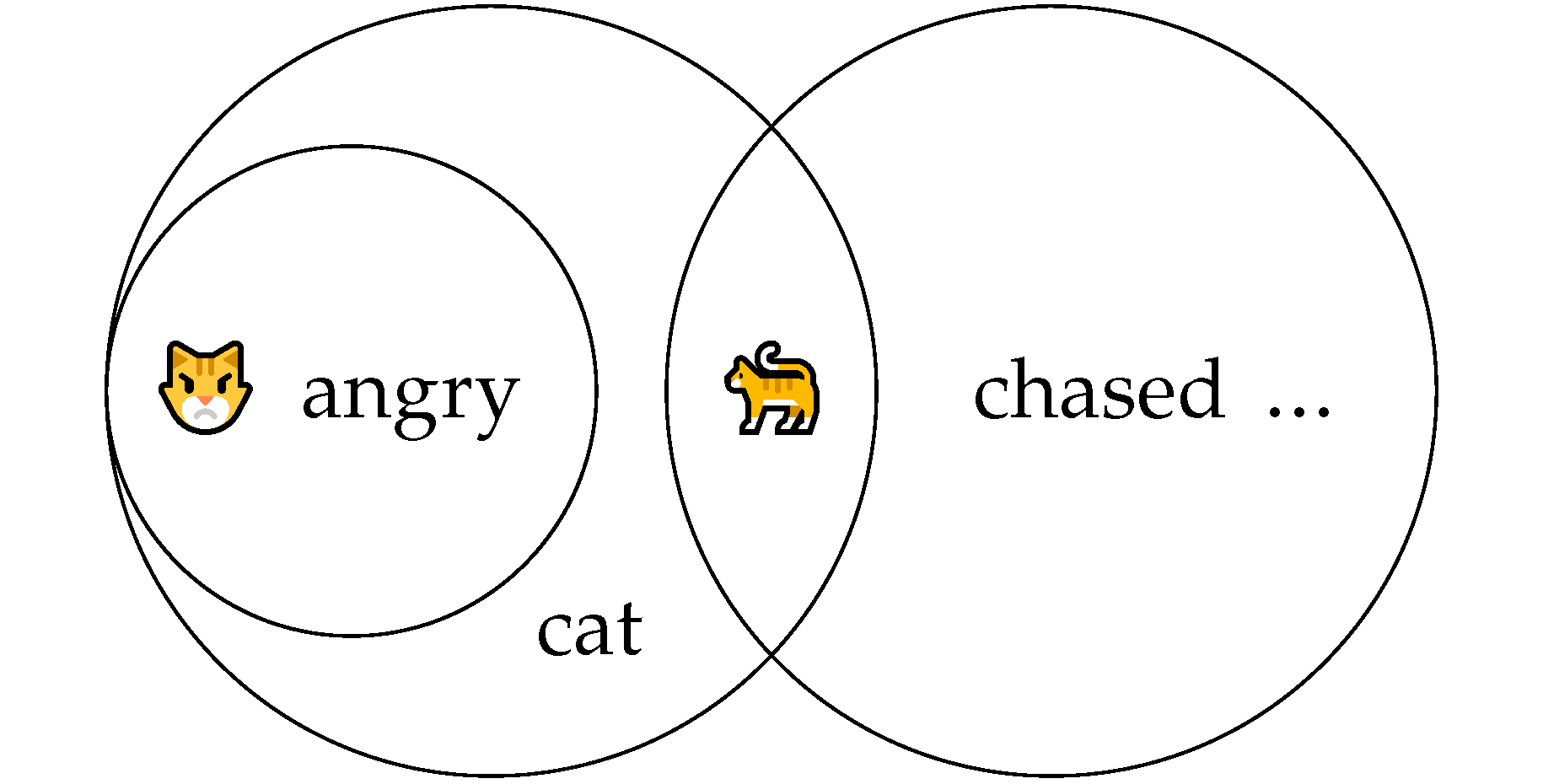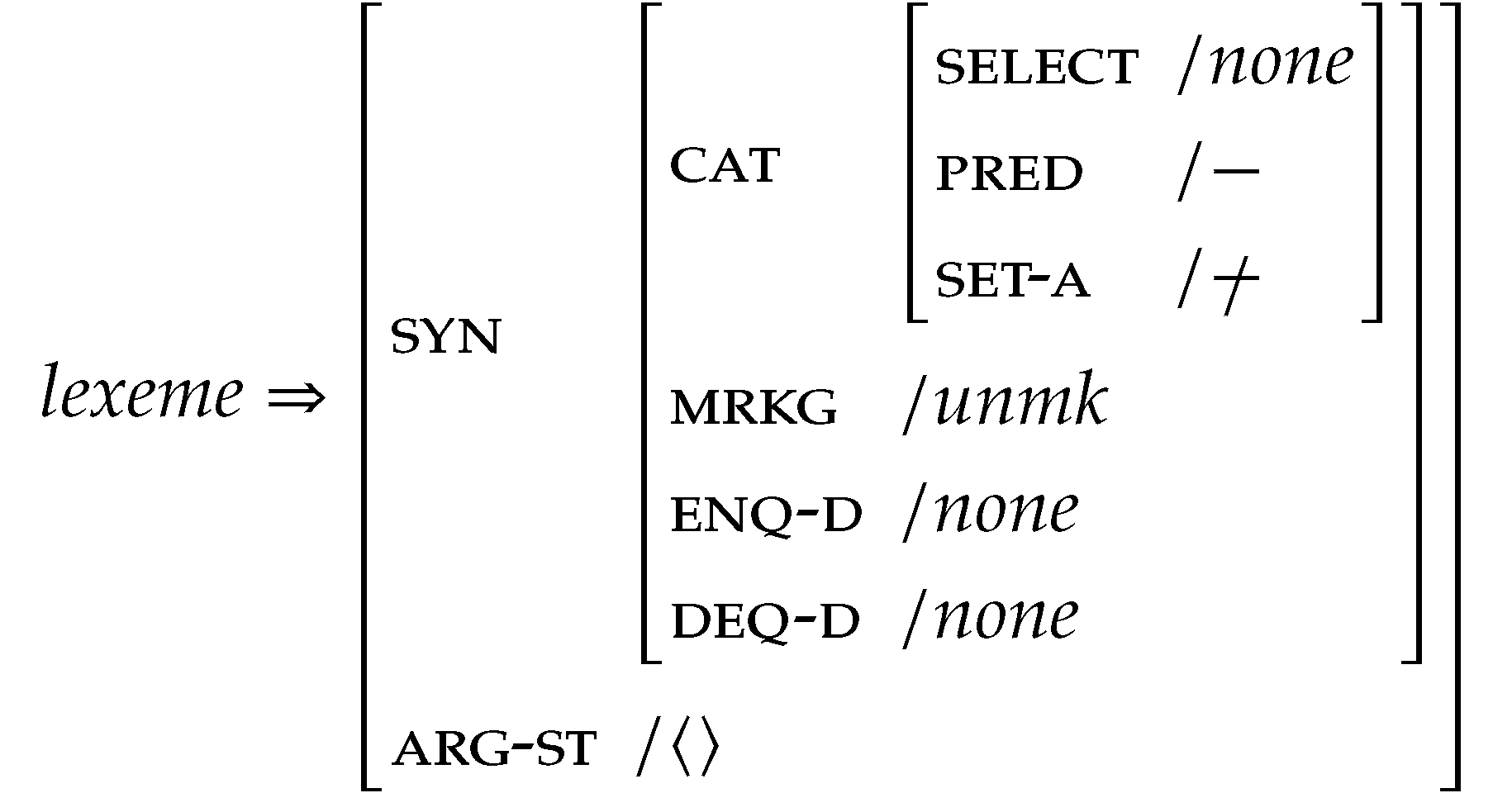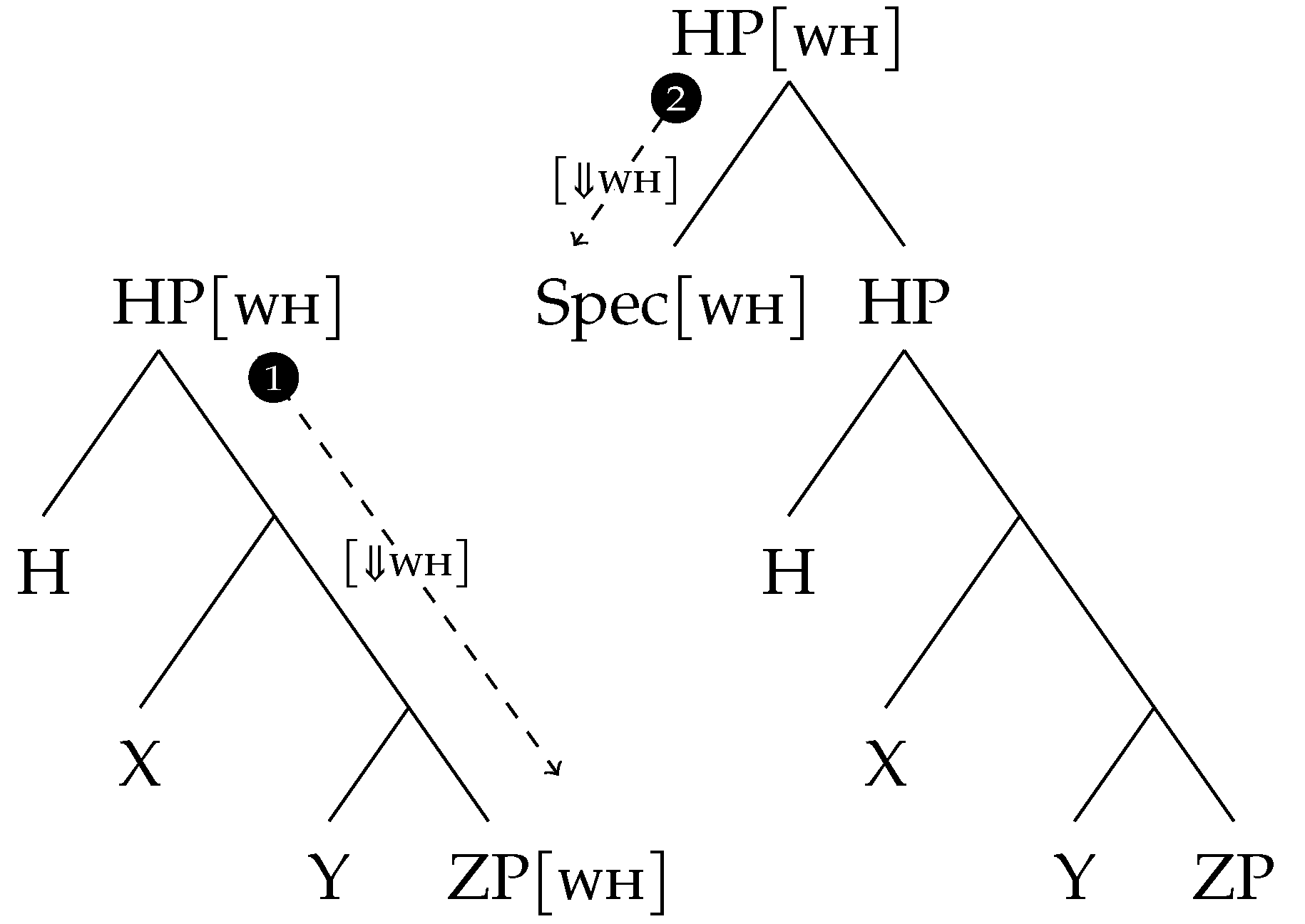A'ingae (or Cofán, ISO 639-3: con) is an Amazonian isolate spoken by ca. 1,500 Cofán people in the province of Sucumbíos (northeast Ecuador) and the department of Putumayo (southern Colombia). In addition to documenting and describing the language, I have explored a number of theoretical topics, including the morphophonology of metrical stress and glottal stops, recent sound changes, morphosyntactic boundary marking, apprehensional semantics, second-position clitics, pied-piping, conditional constructions, and others.

1.1.1 descriptive sketch
I present the first comprehensive overview of the A'ingae phonology, including descriptions of the language's phonemic inventory, phonotactics, prominent phonological rules, nasality and nasal spreading, stress, glottalization, their morphophonology, and aspects of clause-level prosody.
Phonology. In: Metrical stress and glottal stops in A'ingae: A study of cyclicity and dominance at the interface of phonology and morphology. Doctoral dissertation. University of California, Berkeley. 2025. chapter (an earlier version of the chapter published in Language and Linguistics Compass)
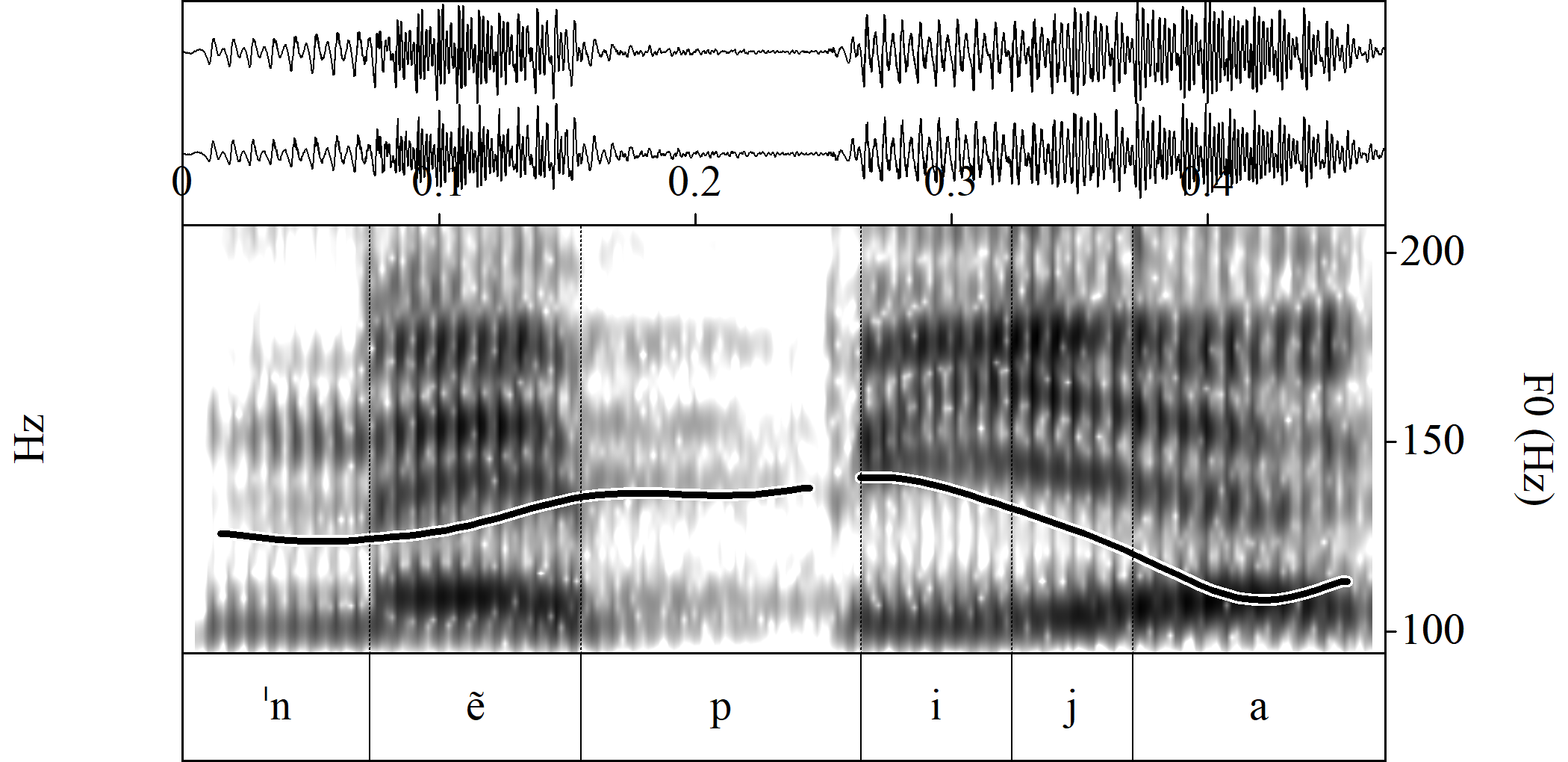
1.1.2 morphophonology of stress and glottalization
I describe and analyze aspects of A'ingae's morphophonology of stress and glottalization. I argue that morpheme-specific stress deletion cannot be captured representationally. I demonstrate that the phonological tier of the A'ingae glottal stop differs between two morphological domains and interacts with stress deletion, bearing out a new prediction of Cophonologies by Phase (Sande, Jenks, and Inkelas, 2020). I show that the patterns of stress and glottalization overwriting in nominalizations are sensitive to the morphosyntactic structure of the base, violating strict grammatical modularity.
Strata, diacritics, and their interactions: A study of verbal morphophonology. In: Metrical stress and glottal stops in A'ingae: A study of cyclicity and dominance at the interface of phonology and morphology. Doctoral dissertation. University of California, Berkeley. 2025. chapter (an earlier version of the chapter published across Natural Language & Linguistic Theory and Phonology)
Phasal strength in A'ingae classifying subordination. In: Proceedings of the 2023 and 2024 Annual Meetings on Phonology 1(1). Ed. by Gérard Avelino, Merlin Balihaxi, Quartz Colvin, Vincent Czarnecki, Hyunjung Joo, Chenli Wang, Utku Zobarlar, Adam Jardine, and Adam McCollum. Amherst, Massachusetts: University of Massachusetts Amherst Libraries. 2025. proceedings
Phonology grants no asylum: The inescapability of syntax in A'ingae dominance blocking. Invited talk presented at the workshop Phonological domains and what conditions them, University of California, Berkeley. 2024. handout

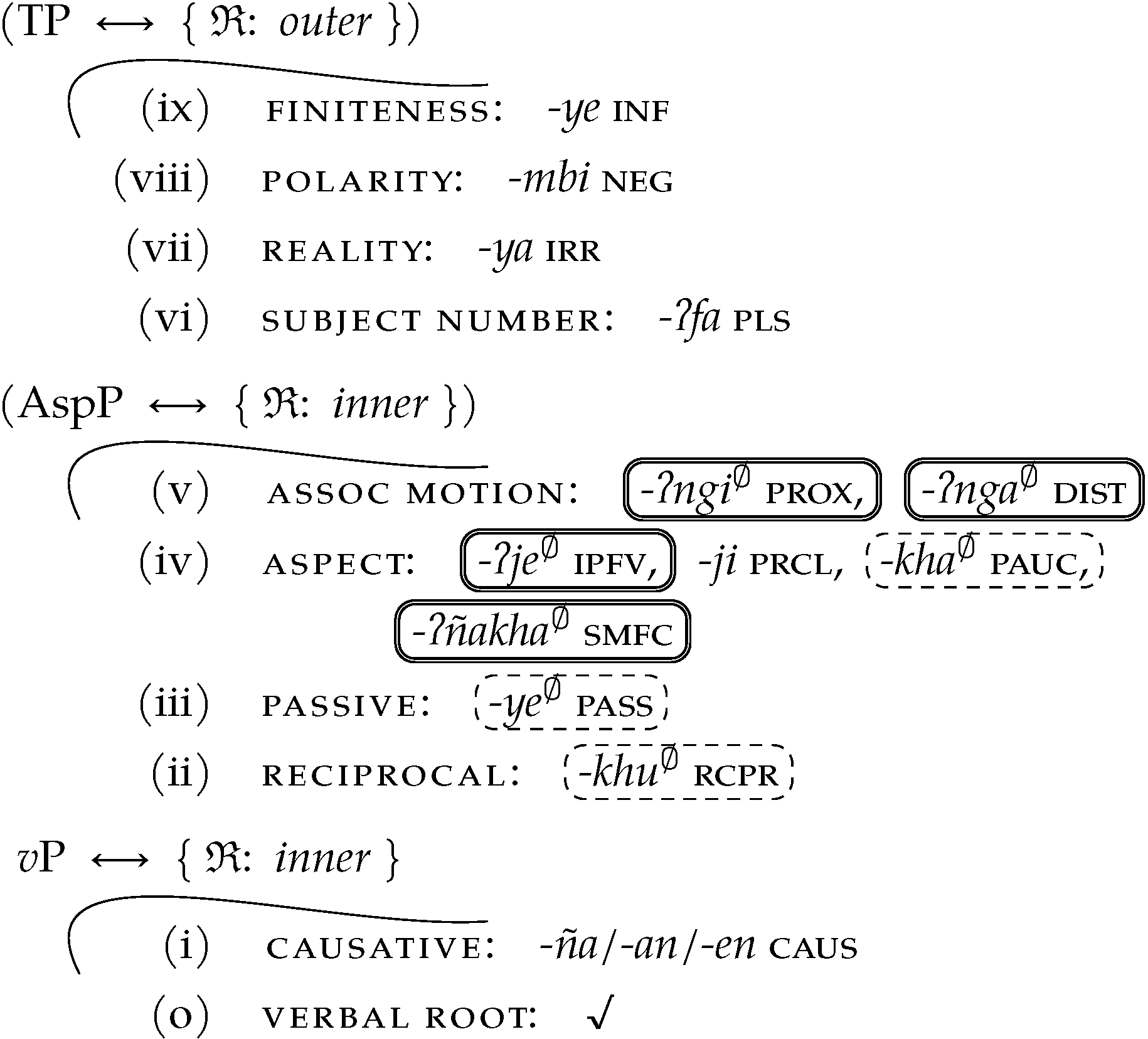
1.1.3 metrically-optimizing reduplication
I describe and analyze the A'ingae pluractional reduplicative suffix -ʔσ, which requires that the reduplicated form have the following shape: (ˈσ1̆σ2ʔ)σ2. I model this behavior with a reduplicant-specific cophonology (e.g. Orgun, 1996), which consists of a ranking of independently motived constraints (Dąbkowski, 2023). This shows that A'ingae reduplication is phonologically optimizing.
A'ingae reduplication is phonologically optimizing. In: Supplemental Proceedings of the 2022 Annual Meeting on Phonology. Ed. by Noah Elkins, Bruce Hayes, Jinyoung Jo, and Jian-Leat Siah. Washington, DC: Linguistic Society of America. 2023. proceedings poster
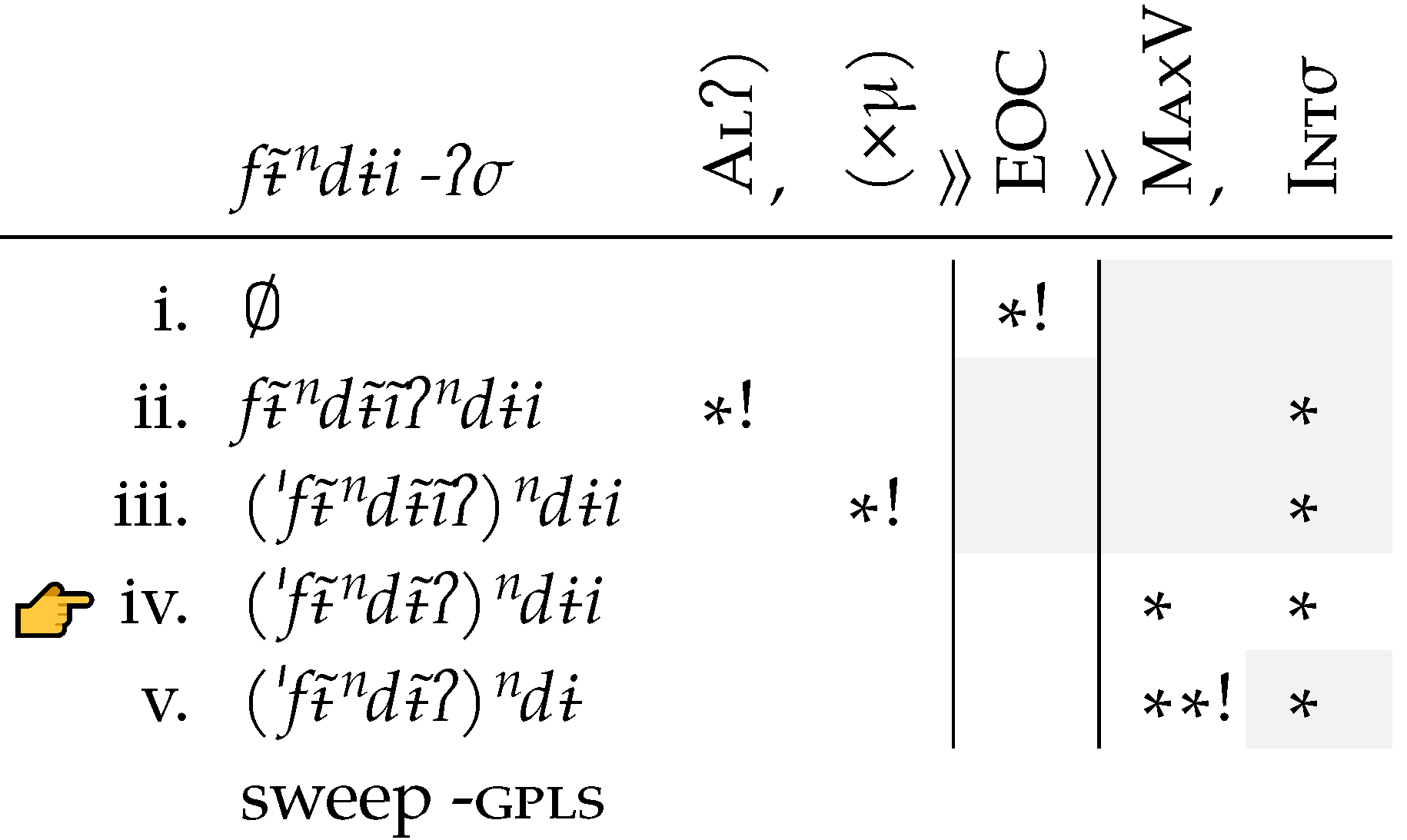
1.1.4 diachronic deglottalization
Some A'ingae words historically derived with otherwise preglottalized nominalizers show no glottalization today. I propose that these "exceptions" are reflexes of originally glottalized words, which underwent semantic shift and lost glottalization due to contamination from the glottalless majority.
Deglottalizing contamination in A'ingae historical derivatives. In: Proceedings of the Linguistic Society of America 10(1), 5879. Washington, DC: Linguistic Society of America. 2025. proceedings
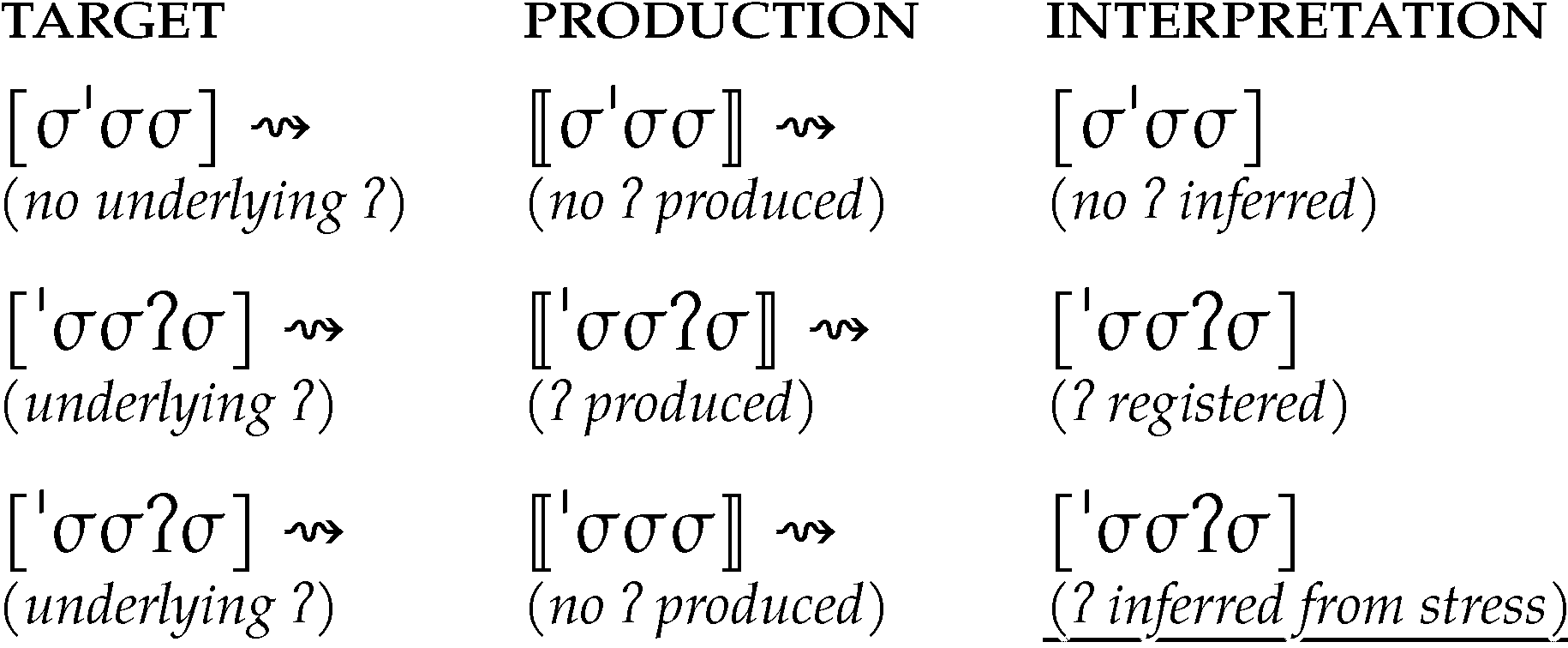
1.1.5 diphthongs and their changes
I describe and analyse two phenomena affecting diphthongs: postlabial raising (*ai > ɨi / P _) and postlabial rounding (/ae/ → [oe] / P _). The postlabial raising reflects a sequence of sound changes, whereby *ai first postlabially rounded and then unrounded (followed by replacement and paradigmatic leveling). The postlabial rounding of /ae/ results from its subsegmental make-up, ae = (a1 a2 e2 e3), contributing a novel argument for the representations of Q-Theory (Inkelas and Shih, 2016, 2017).
Postlabial raising and paradigmatic leveling in A'ingae: A diachronic study from the field. In: Proceedings of the Linguistic Society of America 8(1). 5428. Ed. by Patrick Farrell. Washington, DC: Linguistic Society of America. 2023. proceedings poster
A Q-Theoretic solution to A'ingae postlabial rounding. Linguistic Inquiry, pp. 1–14. 2025. squib

1.2.1 descriptive sketch
I describe the structure of A'ingae sentences, touching on the properties of matrix and (co)subordinate clauses, auxiliary verbs, serial verb constructions, wh-movement, and second-position clitics. I discuss the morphosyntax of A'ingae verbs, including the meanings of verbal morphemes, their templatic arrangement, and co-occurrence restrictions.
Clausal and verbal morphosyntax. In: Metrical stress and glottal stops in A'ingae: A study of cyclicity and dominance at the interface of phonology and morphology. Doctoral dissertation. University of California, Berkeley. 2025. chapter
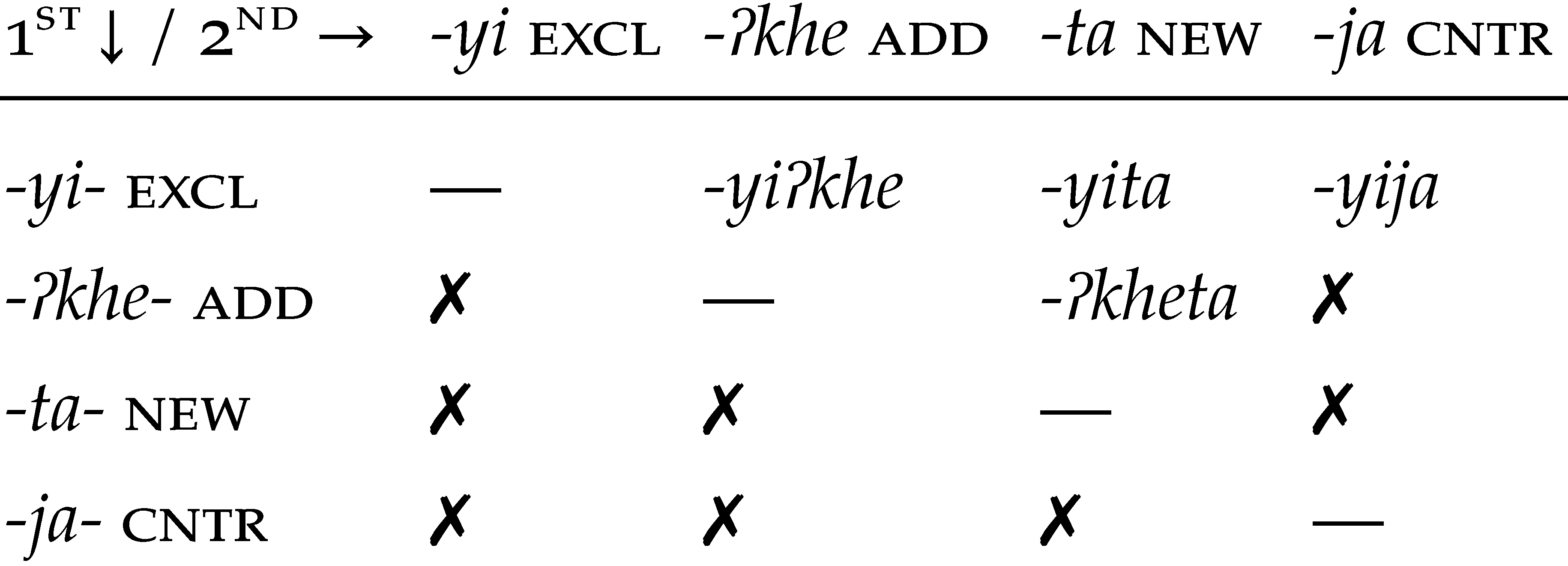
1.2.2 information structure and conditionals
I propose that a glottal stop -ʔ is the realization of T° when adjacent to the higher-order discourse feature [δ] (Bossi and Diercks, 2019; Mikkelsen, 2015), providing novel morphological evidence for a hierarchical arrangement of discourse features. I argue that in distanced conditionals, mental space distance is conveyed with the semantically bleached similative marker.
Boundary glottals and A'ingae information structure: A morphological argument for a discourse feature geometry. Manuscript. University of California, Berkeley. 2025. manuscript ❧ In: NELS 55: Proceedings of the Fifty-Fifth Annual Meeting of the North Eastern Linguistic Society, Volume One, pp. 149–158. Ed. by Duygu Demiray, Roger Cheng-yen Liu, and Nir Segal. Amherst, Massachusetts: GLSA (Graduate Linguistics Student Association), Department of Linguistics, University of Massachusetts, Amherst. 2025. proceedings poster
Conditional constructions in A'ingae. Manuscript. University of California, Berkeley. 2021. manuscript

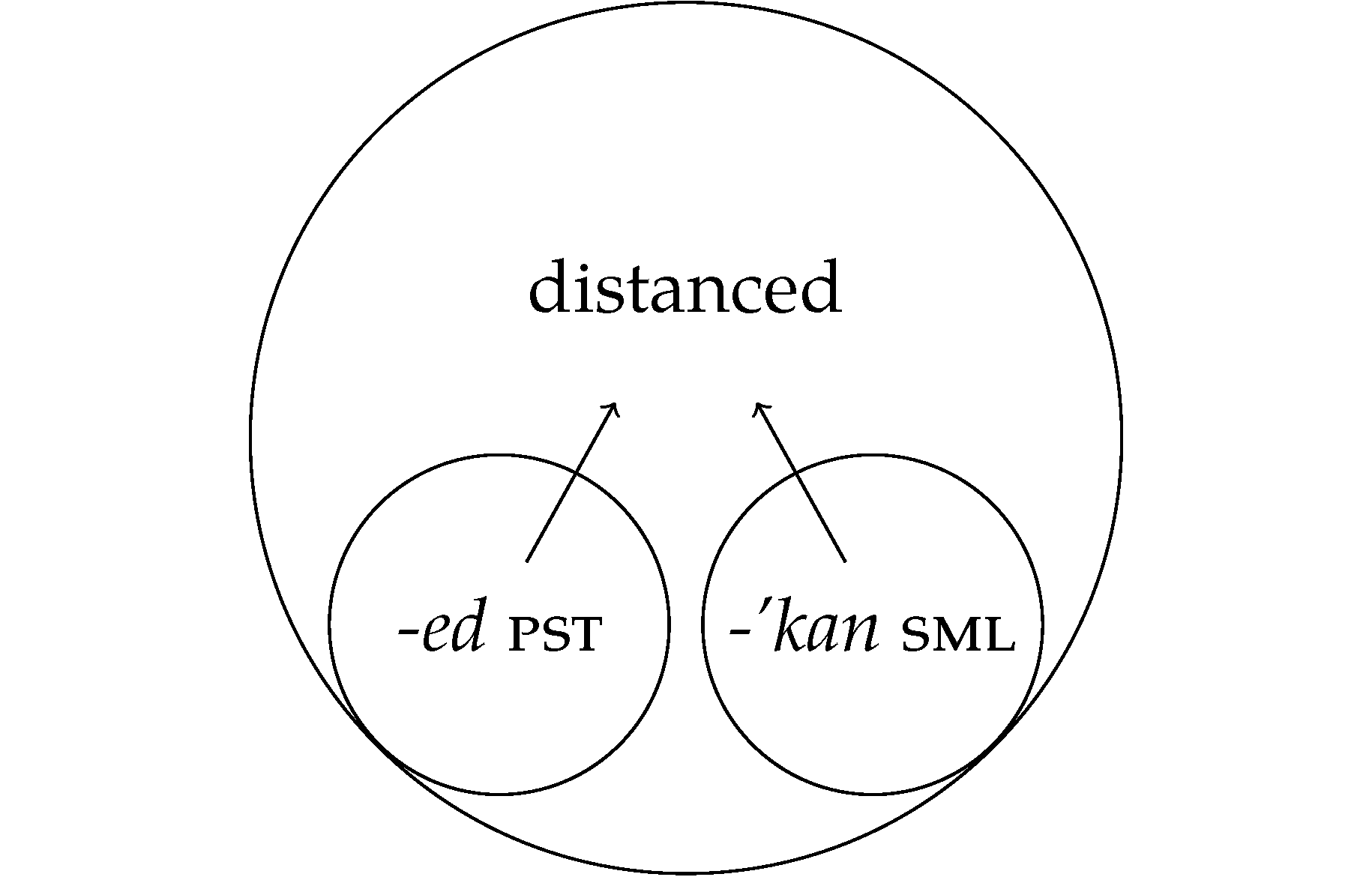
1.2.3 the left periphery
I analyze A'ingae second-position clitics as matrix clausal C-heads, demonstrating that—despite its apparent non-configurationality—A'ingae has a structured left periphery. I describe A'ingae pied-piping structures and account for them using Cable's (2010) Q-particle theory.
A'ingae second-position clitics are matrix C-heads. In: Proceedings of the Workshop on Structure and Constituency in the Languages of the Americas 25, pp. 31–42. Ed. by Marianne Huijsmans, D. K. E. Reisinger, and Rose Underhill. Vancouver, BC: University of British Columbia Working Papers in Linguistics. To appear. proceedings
A'ingae pied-piping: A Q-based analysis. Paper presented at the 4th Symposium on Amazonian Languages, University of California, Berkeley. 2022. handout

1.2.4 negative nominalizations
I identify the "nominal negative" suffix -a nn, which obligatorily attaches to noun phrase-internal functional heads that nominalize negated predicates. I propose that -a nn expresses agreement with the Neg(ative) feature on T. Therefore, I document the first case of agreement with polarity on nominalizers to date.
Polarity agreement in A'ingae nominalizations. Paper presented at the Annual Meeting of the Society for the Study of the Indigenous Languages of the Americas, Denver, CO. 2023. handout
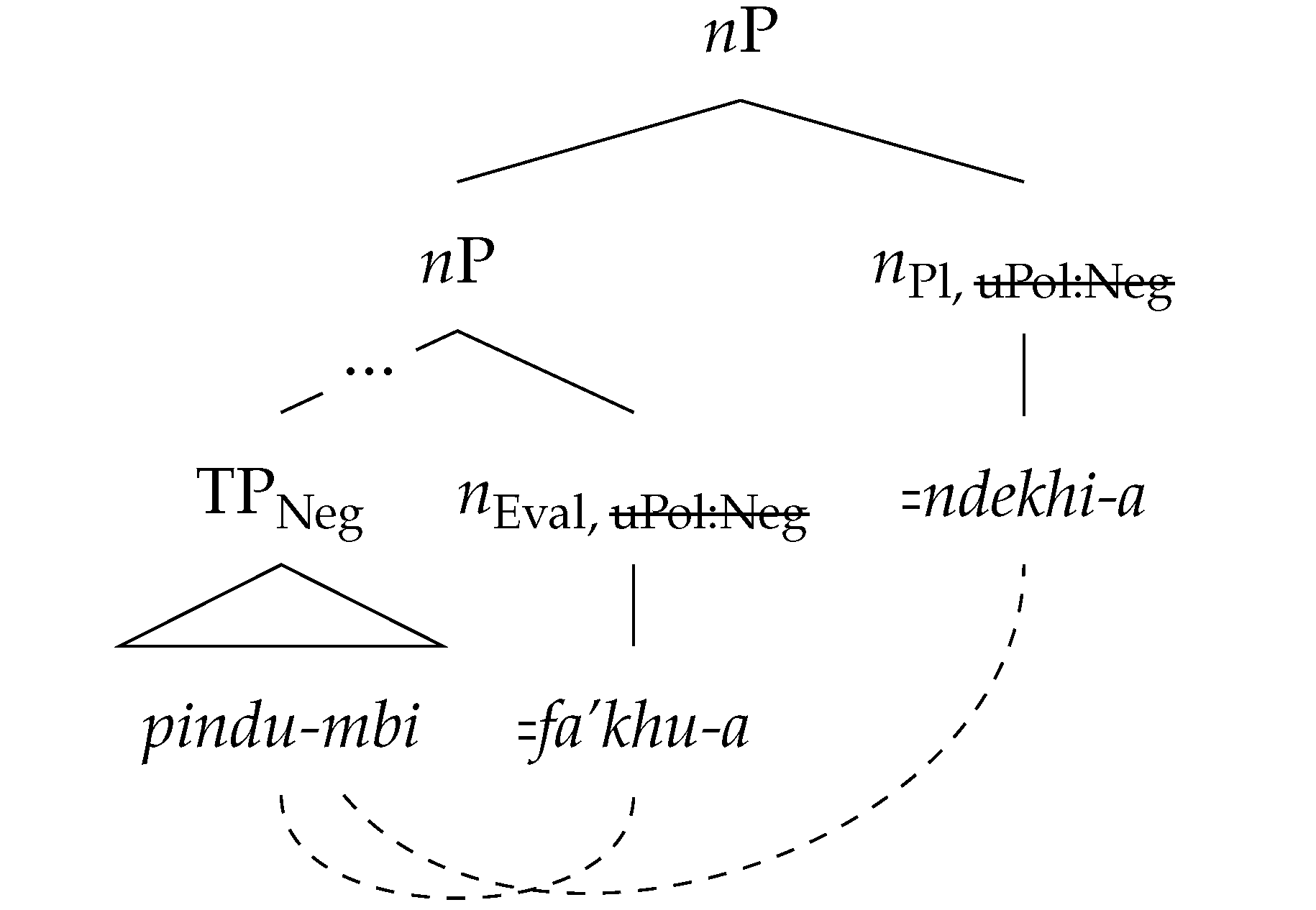
In a collaborative project with Scott AnderBois, we describe and analyze different uses of the A'ingae apprehensional morpheme -sa'ne appr. We put forth a formal account of rationale and precautioning clauses, which captures language-internal asymmetries and typological trends within this semantic domain. We propose a typological framework for describing and comparing apprehensional synchrony and diachrony.
The apprehensional domain in A'ingae (Cofán), as first author, with Scott AnderBois. In: Apprehensional constructions in a cross-linguistic perspective. Ed. by Marine Vuillermet, Martina Faller, and Eva Schultze Berndt. Research on Comparative Grammar. Berlin: Language Science Press. To appear. chapter
A'ingae =sa'ne 'appr' and the semantic typology of apprehensional adjuncts, as equal author, with Scott AnderBois. In: Proceedings of the 30th Semantics and Linguistic Theory Conference, pp. 43–62. Ed. by Joseph Rhyne, Kaelyn Lamp, Nicole Dreier, and Chloe Kwon. Washington, DC: Linguistic Society of America. 2020. proceedings
Rationale and precautioning clauses: Insights from A'ingae, as first author, with Scott AnderBois. Journal of Semantics 40(2-3), pp. 391–425. 2024. article
The semantics and expression of apprehensional modality, as second author, with Scott AnderBois. Language and Linguistics Compass 19(1), e70002. 2025. article

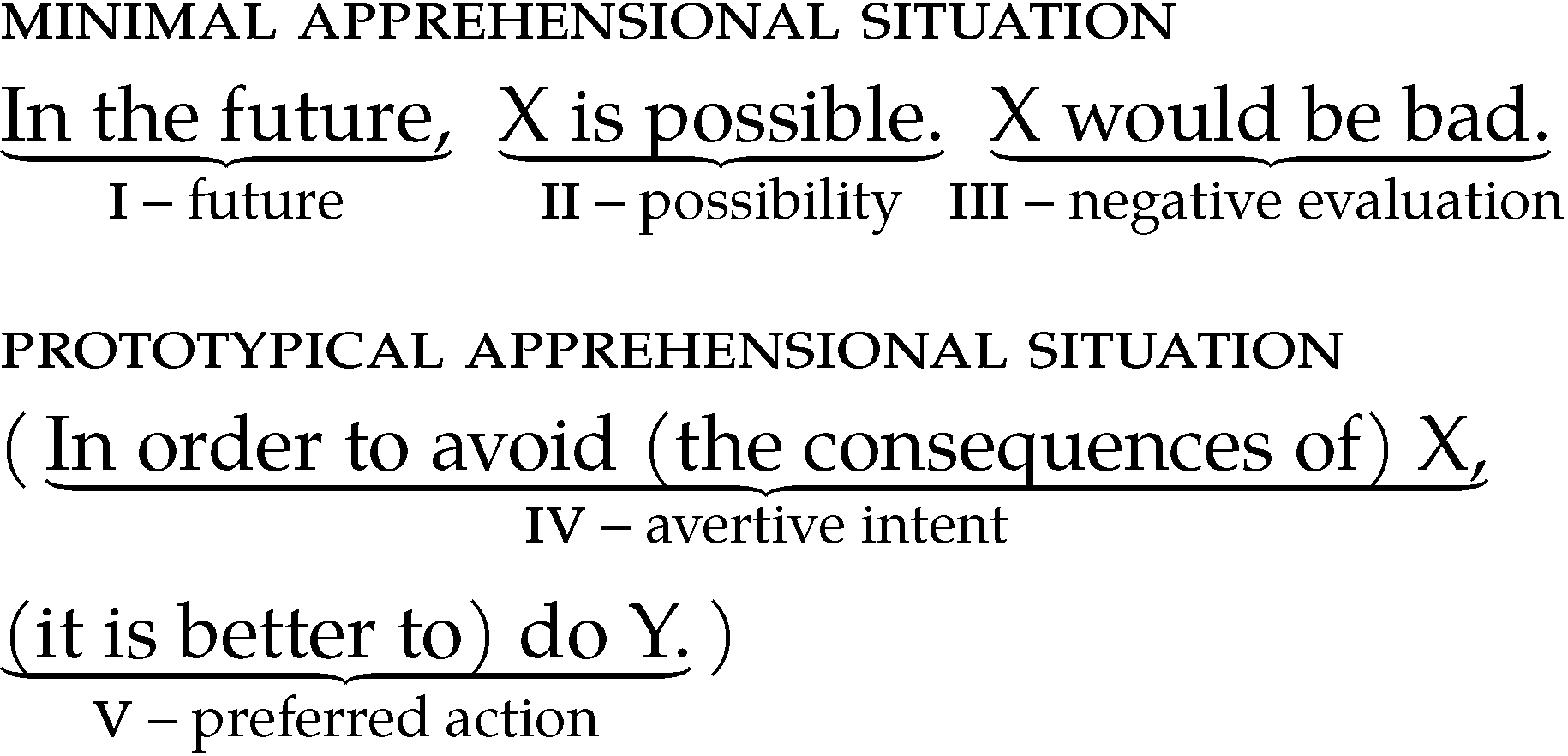
I have documented A'ingae in the indigenous communities of Dureno and Sinangoé (Sucumbíos, Ecuador) and remotely. I am depositing over 57 hours of oral narrative video recordings (of which over 16 hours have been transcribed and translated) as well as elicitation data, including fieldnotes and over 220 hours of audio recordings.
A'ingae language documentation, as equal author, with Justin Bai, Kalinda Pride, and Nicholas Tomlin. Poster presented at Summer Research Symposium, Brown University, Providence, RI. 2017. poster
Language background. In: Metrical stress and glottal stops in A'ingae: A study of cyclicity and dominance at the interface of phonology and morphology. Doctoral dissertation. University of California, Berkeley. 2025. chapter (an earlier version of the chapter published in Language Documentation and Description)
A'ingae field materials. 2020-19. California Language Archive, Survey of California and Other Indian Languages. University of California, Berkeley. collection
